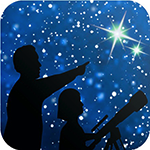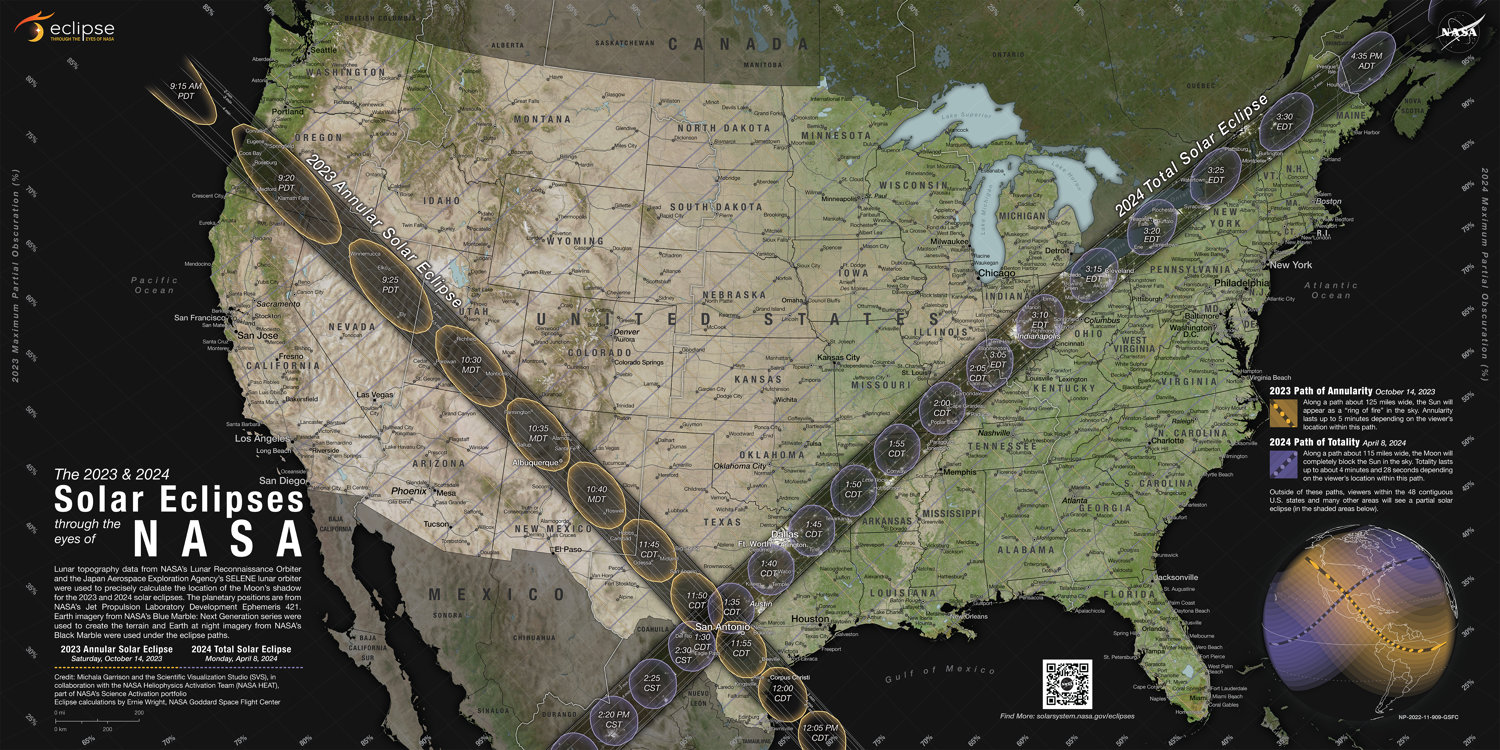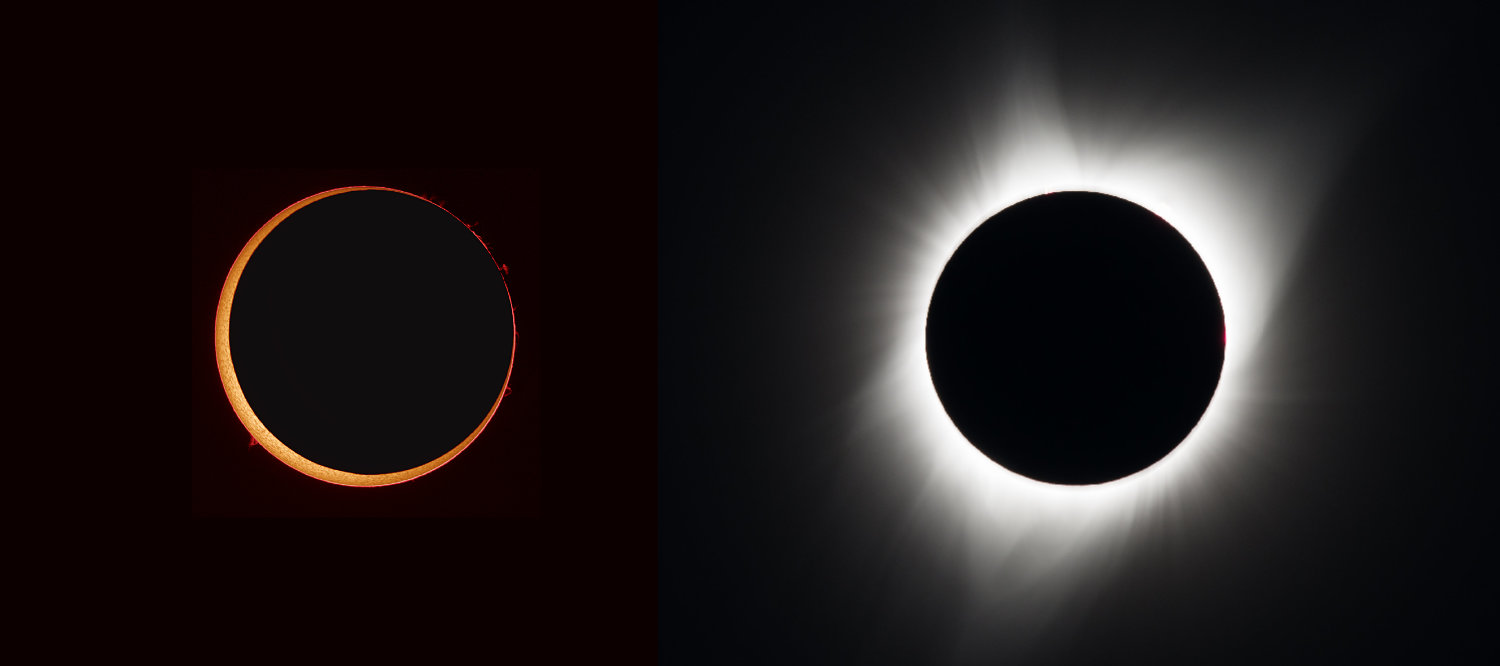Have you ever witnessed a total solar eclipse? What about an annular solar eclipse? If not, then you are in luck if you live in North America: the next twelve months will see two solar eclipses darken the skies for observers in the continental United States, Mexico, and Canada!
Solar eclipse fans get a chance to witness an annular eclipse this fall. On Saturday, October 14, 2023, the Moon will move exactly in front of the Sun from the point of view of observers along a narrow strip of land stretching across the United States from Oregon to Texas and continuing on to Central and South America. Since the Moon will be at its furthest point in its orbit from Earth at that time (known as apogee), it won’t completely block the Sun; instead, a dramatic “ring” effect will be seen as the bright edge of the Sun will be visible around the black silhouette of the Moon. The distinct appearance of this style of eclipse is why it’s called an annular eclipse, as annular means ring-like. If you are standing under a tree or behind a screen you will see thousands of ring-like shadows projected everywhere during maximum eclipse, and the light may take on a wan note, but it won’t actually get dark outside; it will be similar to the brightness of a cloudy day. This eclipse must only be observed with properly certified eclipse glasses, or other safe observation methods like pinhole projection or shielded solar telescopes. Even during the peak of the eclipse, the tiny bit of the Sun seen via the “ring” can damage your retinas and even blind you.
Just six months later, a dramatic total solar eclipse will darken the skies from Mexico to northeast Canada, casting its shadow across the USA in a strip approximately 124 miles (200 km) wide, on Monday, April 8, 2024. While protection must be worn to safely observe most of this eclipse, it’s not needed to witness totality itself, the brief amount of time when the Moon blocks the entire surface of the Sun from view. And if you try to view totality through your eclipse viewer, you won’t actually be able to see anything! The Moon’s shadow will dramatically darken the skies into something resembling early evening, confusing animals and delighting human observers. You will even be able to see bright stars and planets – provided you are able to take your eyes off the majesty of the total eclipse! While the darkness and accompanying chilly breeze will be a thrill, the most spectacular observation of all will be the Sun’s magnificent corona! Totality is the only time you can observe the corona, which is actually the beautiful outer fringes of the Sun’s atmosphere. For observers in the middle of the path, they will get to experience the deepest portion of the eclipse, which will last over four minutes – twice as long as 2017’s total solar eclipse over North America.
While some folks may be lucky enough to witness both eclipses in full – especially the residents of San Antonio, Texas, whose city lies at the crossroads of both paths – everyone off the paths of maximum eclipse can still catch sight of beautiful partial eclipses if the skies are clear. The Eclipse Ambassadors program is recruiting volunteers across the USA to prepare communities off the central paths in advance of this amazing cosmic ballet. Find more information and apply to share the excitement at eclipseambassadors.org. NASA has published a fantastic Solar Eclipse Safety Guide which can help you plan your viewing at bit.ly/nasaeclipsesafety. And you can find a large collection of solar eclipse resources, activities, visualizations, photos, and more from NASA at solarsystem.nasa.gov/eclipses
This detailed solar eclipse map shows the paths of where and when the Moon’s shadow will cross the USA for the upcoming 2023 annular solar eclipse and 2024 total solar eclipse, made using data compiled from multiple NASA missions. Where will you be? This map is very detailed, so if you would like to download a larger copy of the image, you can do so and find out more about its features at: https://svs.gsfc.nasa.gov/5073 Credits: NASA/Scientific Visualization Studio/Michala Garrison; eclipse calculations by Ernie Wright, NASA Goddard Space Flight Center.
Photos of an annular total solar eclipse (left) and a total solar eclipse (right). Note that the annular eclipse is shown with a dark background, as it is only safe to view with protection – you can see how a small portion of the Sun is still visible as the ring around the Moon. On the right, you can see the Sun’s wispy corona, visible only during totality itself, when the Moon completely – or totally – hides the Sun from view. A total solar eclipse is only safe to view without protection during totality itself; it is absolutely necessary to protect your eyes throughout the rest of the eclipse! Credits: Left, Annular Eclipse: Stefan Seip (Oct 3, 2005). Right, Total Eclipse, NASA/Aubrey Gemignani (August 21, 2017)
This article is distributed by NASA’s Night Sky Network (NSN). The NSN program supports astronomy clubs across the USA dedicated to astronomy outreach. Visit nightsky.jpl.nasa.gov to find local clubs, events, and more!



